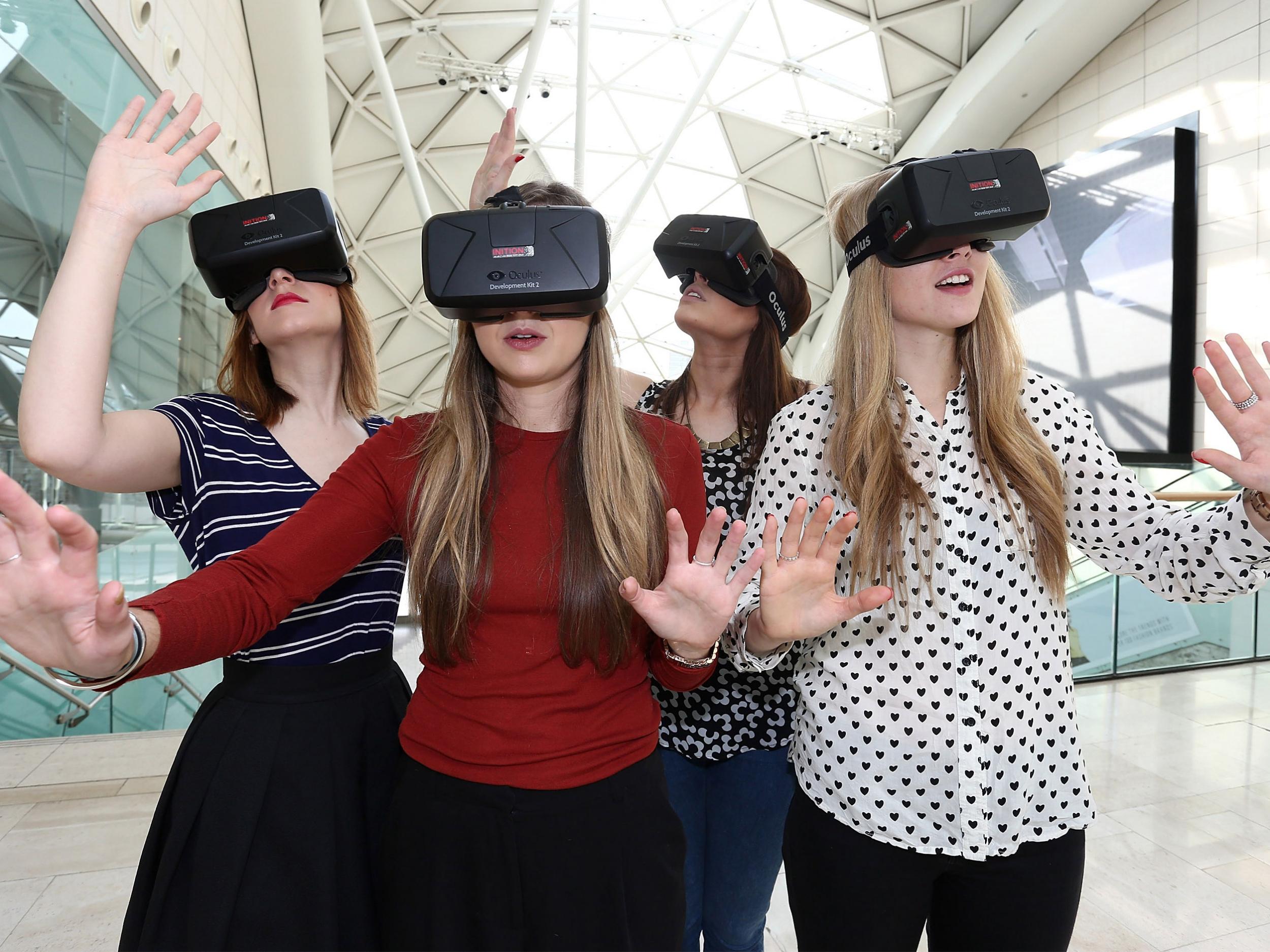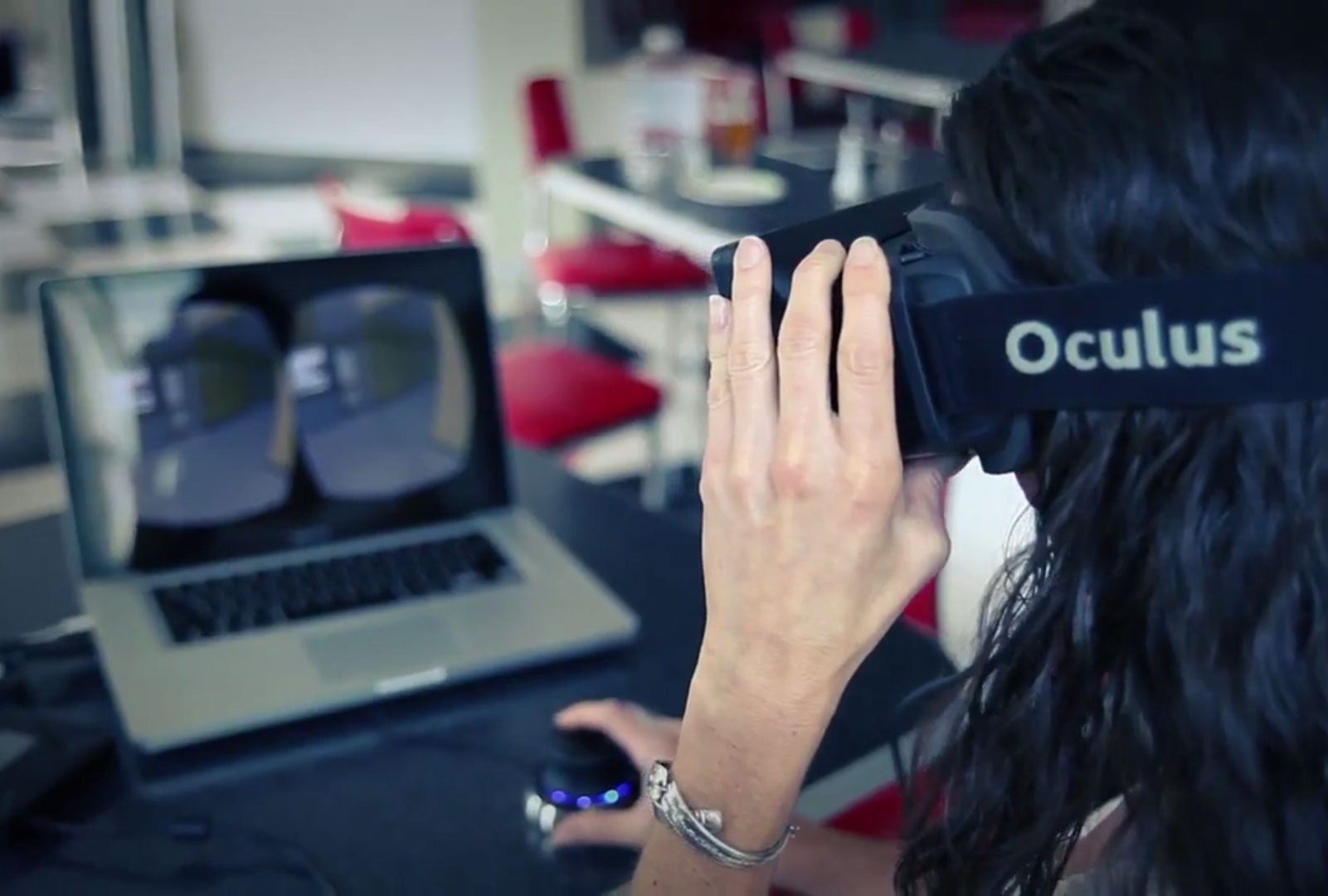Oculus Rift: 5 things you can do with the VR headset apart from gaming
Despite being marketed as a gaming device, the Rift has applications in architecture, art and medicine

Your support helps us to tell the story
From reproductive rights to climate change to Big Tech, The Independent is on the ground when the story is developing. Whether it's investigating the financials of Elon Musk's pro-Trump PAC or producing our latest documentary, 'The A Word', which shines a light on the American women fighting for reproductive rights, we know how important it is to parse out the facts from the messaging.
At such a critical moment in US history, we need reporters on the ground. Your donation allows us to keep sending journalists to speak to both sides of the story.
The Independent is trusted by Americans across the entire political spectrum. And unlike many other quality news outlets, we choose not to lock Americans out of our reporting and analysis with paywalls. We believe quality journalism should be available to everyone, paid for by those who can afford it.
Your support makes all the difference.Almost four years after it began as a Kickstarter campaign, the Oculus Rift virtual reality (VR) headset has finally started being delivered to customers.
A lot has been made of the Rift's uses in gaming, and that's what Oculus is aiming for - users currently need a high-end gaming PC to run it properly, and it's shipping with an Xbox One console controller and a few bundled games.
However, the Rift and competing VR headsets like the HTC Vive have huge applications elsewhere and the potential to revolutionise other industries, in the same way they've changed gaming.
Architecture
Architects spend a lot of time showing off models, drawings and 3D simulations to their clients. However, there's only so much you can show with a 2D illustration, or a computer-generated image on a screen.

Now, devices like the Rift are being used to change how they work - one New York-based company, IrisVR, uses its software to create VR-compatible 3D models which allow clients to feel like they're actually in a building, walking through the rooms and really getting a sense of the scale and feel of a space.
IrisVR also works with engineers and designers, letting them see their creations up close without needing to go through the lengthy and expensive prototyping process.
Art
VR, especially when used with motion-detecting controllers, can let artists to enter the world of their paintings and drawings.
Google's Tilt Brush, compatible with the upcoming HTC Vive headset, does just this - users enter an expansive blank space, and use the Vive's controller to paint and draw in the space around them. They can move around their 3D 'canvas' simply by walking, while creating fully-realised paintings, dioramas and abstract creations.
Former Disney animator Glen Keane illustrated this perfectly in a video, stepping inside Tilt Brush to create 3D renditions of Ariel from The Little Mermaid and the Beast from Beauty and The Beast.
There aren't any VR art galleries filled with 3D paintings yet, but don't be surprised if we see it in the future.
Medicine
Virtual reality's amazing applications in medicine were demonstrated in January, when doctors in Florida used the Google Cardboard headset to save the life of a baby.
Four-month-old Teegan Lexcen needed heart surgery, but doctors didn't have the confidence to go ahead since the standard 2D images of her body couldn't provide enough detail. However, by converting her MRI scans into a 3D model and viewing it through Google Cardboard, they managed to develop a complex strategy for the operation and eventually rebuilt part of her heart in a seven-hour procedure, saving her life.
Surgery is all about planning, and being able to see a patient's body as if they were lying on the table in front of them would be a huge help to surgeons. Devices like the Rift can also be used in doctor training, remote surgery and all kinds of internal imaging.
Therapy
The practice of using virtual reality to treat mental health problems already has its own acronym - virtual reality therapy, or VRT.
Speaking to The Verge in 2013, Dr Albert Rizzo from the University of Southern California's Institute for Creative Technologies said: "I have no question that Oculus will revolutionise virtual reality for clinical purposes. This system is going to be about so much more than playing games."

Rizzo has used VR to treat veterans suffering from post-traumatic stress disorder (PTSD) by putting them through 'exposure therapy'. He uses the Rift to virtually place soldiers at the scene of a traumatic battlefield event in a controlled situation, helping them process their anxious feelings and overcome the worst of the disorder.
VR headsets have also been used to help amputees suffering from phantom pain. After using the headsets to 'regain' their missing limbs, some patients have reported reductions in their sometimes debilitating pains.
Tourism
If you've ever wanted to visit a foreign country but can't afford the plane tickets, VR may be the answer.
Looking at the pyramids through a VR headset is never going match up to the real thing, but it can come pretty close. There's a number of programs and applications out there which transport users to museums, historical sights and famous landscapes around the world, and they generally do a pretty good job.
The tourism industry has so far embraced VR, since they can now demonstrate a holiday to users at home and convince them into booking the real thing. However, as time goes on and VR gets more realistic, will some holidays become obsolete? Only time will tell.
Join our commenting forum
Join thought-provoking conversations, follow other Independent readers and see their replies
Comments